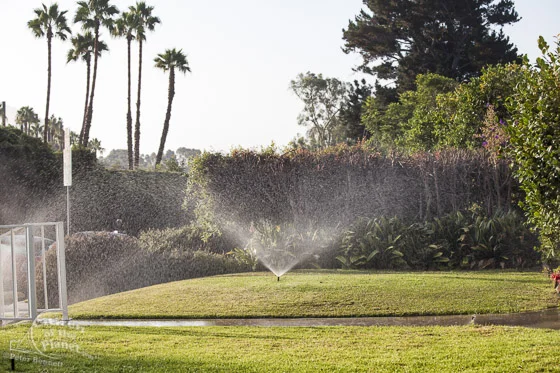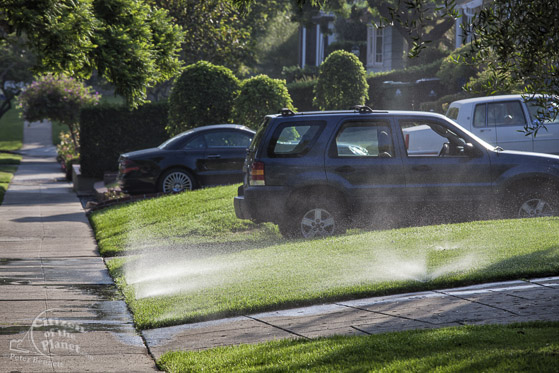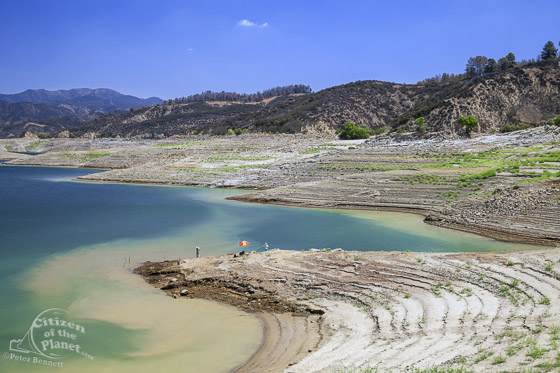A Day of Drought
A few weeks ago I went to shoot some fill-in material for a story on the drought I was doing for Landscape Architecture magazine. I thought the juxtaposition of the two subjects really told the story of how bad it is and how far we need to go before all of us out here in the southland start to take some responsibility ourselves for improving the situation.It is pretty clear that we may be in this for a while. A report last week from the National Oceanic and Atmospheric Administration's Climate Prediction Center indicates a poor forecast for rain and more importantly the snowpack in the Sierra Nevada for this winter. The snowpack is critical for farmers in the San Joachin Valley, without it the crops simply don’t get the irrigation they need. Cutbacks in water allocation have forced farmers to take water from the water table below, a limited supply at best and one that replenishes very slowly. There is only so much they can squeeze from it and without a healthy snowpack it is only a matter of time before the situation becomes critical. At that point high prices for food will be the least of our problems.
My day started in the nearby community of Cheviot Hills. I originally went there to shoot the sprinklers on the golf courses which are a major user of water in urban and suburban environments. The sprinklers were off by the time I arrived but a few homes around the course were sending small cascades of precious water over the green lawns and parkways on the street.
Lawns are nice, they smell good and even just yesterday my son and I took a break from playing catch to lie down on a soft bed of cut grass on the field. The problem is we live in Southern California and lawns are really not native to the Mediterranean climate we have here, watering them uses up an enormous quantity of the resource. Until we start to change our visual aesthetic and sacrifice some of our green lawns for more indigenous and drought resistant plants and gardens we will continue to waste our water.
My next stop was Castaic Lake a reservoir and holding area, part of the California Aqueduct system that brings much of the water we use here in Los Angles from Northern California and the Sacramento Delta. Having just seen all the green of the golf course and the freshly watered lawns in LA, I was really struck by the dryness and low water levels at the reservoir. It is easy to see the normal levels around the lake and the huge drop off of the current levels. The Castaic Dam seems to loom even that much higher over the boat launch below as a result and no swimming signs around the dam sit a couple of hundred feet from the closest water.
Some fishermen scatter around the perimeter, most of them grumbling about the scarcity of fish to catch. From above you can see the brown sediment reflecting off the lake and forms near the shoreline, something the fishermen below may not see, but would seem like an obvious repellent to any fish in the area. Maybe the forecasts are wrong, we can all hope so, but with climate change worsening and periods of drought becoming more the norm, it is going to take more than a few good rainstorms to change the direction we are heading.




